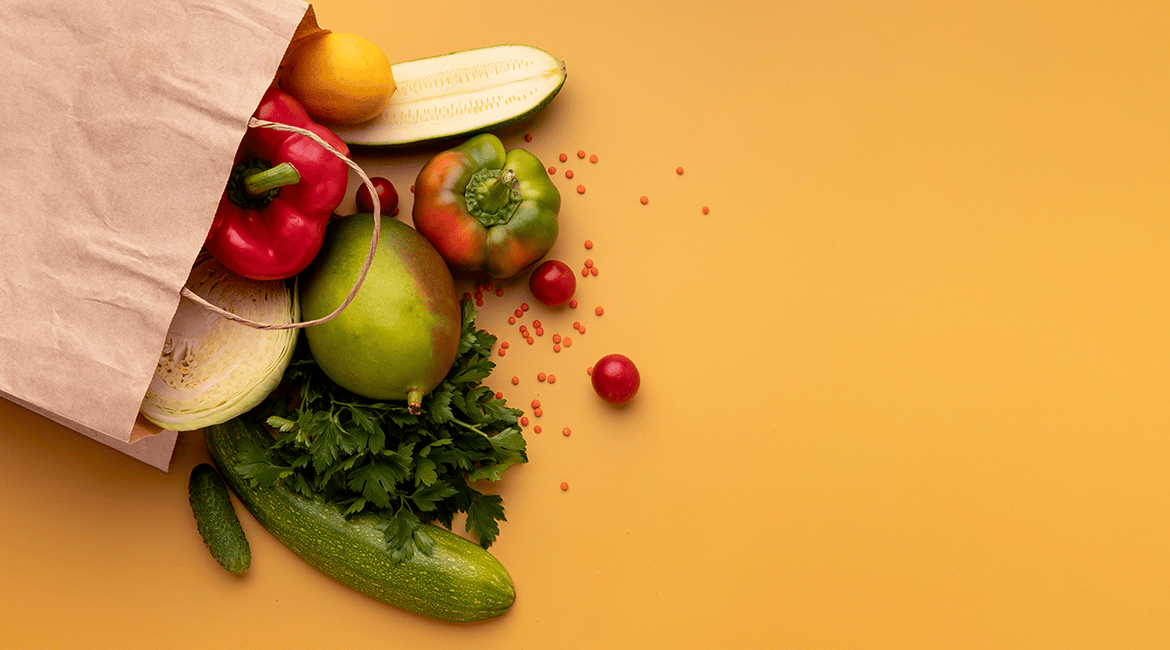We all want our children to gor up happy and healthy, and most of us understand that nutrition and what we eat play a huge part in this. However, trying to feed a family is a difficult undertaking. With time pressures, the rising cost of living and picky eating to contend with it can be difficult to know what to but each week. This article takes a look at what should feature on your weekly grocery list.
What is healthy eating?
The definition of ‘healthy eating’ is difficult to pinpoint as it is continually shifting in response to new research. The evolving understanding of the roles that different food components play in health and disease means that what is considered a healthy diet, or healthy eating, is also continually evolving. The NHS suggests that healthy eating is simply “eating a wide variety of foods in the right proportions, and consuming the right amount of food and drink to achieve and maintain a healthy body weight” but perhaps this is an oversimplification. It’s important to remember that “healthy eating” is about more than just WHAT we eat. HOW we eat is important too.
Food is part of most societies’ identity and rituals, demonstrating that humans have a natural relationship with food. Having a good relationship with food doesn’t have much to do with how good your diet is or the types of food you choose to eat, instead, a good relationship with food is to do with how and why you choose the foods you eat.
If you feel any type of shame, guilt, stress, or fear regarding the foods you eat, you may have an unhealthy relationship with food. As parents, it is our job to help children to develop a healthy relationship with food.
What is healthy eating for children?
When we think about healthy eating it’s important to remember that nutritional needs will vary from person to person, and babies, toddlers and children have different nutritional needs from adults. There are some similarities between the nutritional needs of adults and children as all humans need vitamins, minerals, proteins, carbohydrates and fat. However, these are needed in different amounts depending on age.
Younger children require fewer calories overall. For example, a 1-year-old child should consume about 900 calories per day, but a 14- to 18-year-old needs 1,800 to 2,200 calories, depending on activity level and gender. Where children need to get these calories from varies too; a child aged 2 to 3 years should get 30 to 35 percent of his calories from fat but by the time we reach adulthood we should only get 5 to 6 percent of our calories from fat.
Benefits of healthy eating
The WHO states that “Unhealthy diet and lack of physical activity are leading global risks to health” Whilst “a healthy diet helps to protect against malnutrition in all its forms, as well as non-communicable diseases (NCDs), including diabetes, heart disease, stroke and cancer.”
Healthy eating is important because it helps to maintain good health, which prevents costs to health services. Healthy eating can help us to feel physically and mentally well, and to perform well at work or and contribute to our communities.
Eating a healthy, balanced diet and staying active can help us to maintain a healthy weight, which in turn helps to prevent health issues! Deficiencies in some key nutrients can weaken parts of the immune system, making it much easier for us to get ill, so healthy eating helps us to get all the nutrients we need for the immune system to function normally.
Meal planning
Meal planning can help to save you time, money and disagreements about what to have for dinner, but it doesn’t need to be boring, strict or limiting. Some families really struggle to cook from scratch every night, and that’s okay! Modern life is extremely busy and hectic and sometimes we do need shortcuts. We can help to balance those out by cooking a bigger batch on the days we do cook from scratch and saving a portion to put in the freezer. This way when you do have a busy night you can simply pull a healthy meal out of the freezer.
Ingredients to include in a healthy grocery list for families
Fruits and veggies
Try to include a portion of veggies or salad as part of your main meals and fruit can be used as a good alternative to dessert too. Encouraged children to choose fruit or vegetables as a snack by having them prepared on hand, for example, cucumber and carrot sticks, sliced peppers or prepared mango.
Dairy
Children need to get a bigger proportion of their energy from fats than adults and dairy is a good way for them to achieve this. Under the age of 2 or 3 children should drink full fat milk, but semi-skimmed or skimmed are okay once they are older and growing well. Cheeses and yogurts are another good way to get more fat into children’s diets along with plenty of calcium which contributes to strong bones and teeth. If your child doesn’t tolerate dairy or you choose not to give it, this is not normally a problem but seek some advice on how to ensure that dairy alternatives meet children’s needs.
Carbohydrates
Most western countries suggest basing meals around carbohydrate foods that give us energy, think of your carbohydrates as the base of your dinners and ensure that you keep a stock of rice, pasta or potatoes.
Meat/ fish/ protein
Protein foods like meat and fish are important for building muscle, try and choose lower fat cuts where possible as these will be better for the whole family. If your family are vegetarian or vegan you can choose alternative protein sources like pulses, beans or soya.



